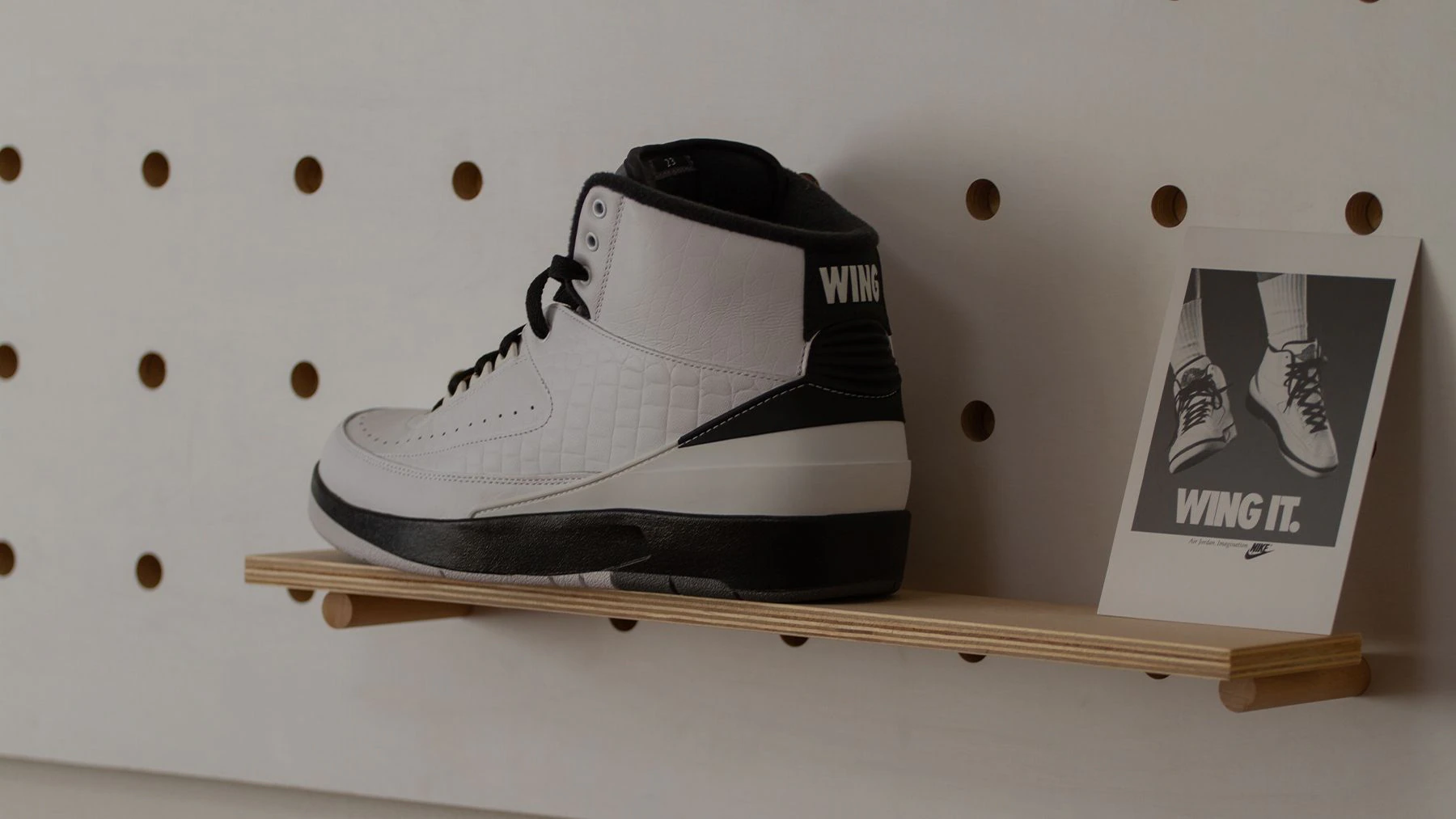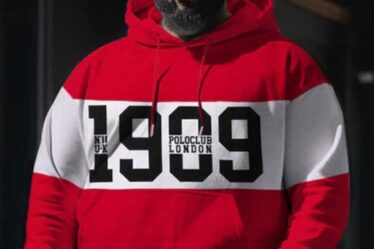
It’s hard to find a Nike shoe that divides the sneaker community as much as the Air Jordan 2.
To some sneakerheads, it’s the forgotten child of the Air Jordan line for good reason. Designed by Nike’s Peter Moore and Bruce Kilgore as a follow up to the groundbreaking Air Jordan 1, the shoe’s understated, white appearance and lack of the trademark Swoosh logo caused a stir on its release in 1986.
To others, however, Jordan 2s are “underrated” and have been “getting shit on for absolutely no reason since 1986,” as one member of Reddit’s sneakers forum put it.
Nike itself is wading into this long-running debate as it banks on the Jordan 2 (also known as the AJ2) to be its next big style. The activewear giant regularly mines its archives for sneakers it can revive through collaborations and limited drops. It’s a wildly successful strategy: Jordan brand sales have more than doubled since 2015, topping $5 billion in the fiscal year ending in May. While that’s just over 10 percent of Nike’s overall revenue, the boost to the brand’s cultural cachet is much bigger.
The hype cycle only lasts so long, however. The last shoe to get this treatment, the Dunk, is widely seen as past its peak; these days they’re a favourite of both teenage sneakerheads and their parents.
Meanwhile, the AJ2 rollout is just beginning. To boost the shoe’s credentials in the sneaker market, Nike is using collaborations with high-profile brands, artists and streetwear stores, as well as a planned relaunch of the shoe in its original colourway.
“It’s about putting the shoe in the marketplace in a strategic way,” said Kris Wright, Jordan’s head of footwear. “The ultimate goal is placing the right amount of units with the right retail partners and getting it into the right people’s hands to create a pull market.”
But the AJ2 is likely to be a bigger test of the sportswear giant’s famed merchandising and marketing strategy than the Dunk. The brand can’t count on residual nostalgia among basketball fans or sneakerheads to kickstart sales. And the AJ2 will be competing with better loved silhouettes, which continue to get regular high-profile releases, like the Air Jordan 1 Georgetown, which dropped in April.
“It’s currently more of a collector’s item than a lifestyle shoe,” said Vivian Frank, a London-based sneaker collector and founder of Sneaker Myth, a footwear blog.
Legendary Adjacent
The original Air Jordan shoe was released in the spring of 1985 by Nike with legendary basketball player Michael Jordan, then in his rookie season with the NBA’s Chicago Bulls.
An instant hit, Nike followed it up a year later with the AJ2s, which were famously unpopular with Michael Jordan himself and consumers in general, owing to the shoe’s quirky design features. Produced in Italy, the shoe’s unremarkable plain white upper was made of leather and faux lizard skin. Since then, the line has had periodic revivals, most recently in 2018.
Today, the most coveted Jordan silhouettes tend to be the 1s, 3s, 4s and 11s, with new colourways and hyped collaborations with the likes of Dior, Off-White and Travis Scott dropping via Nike’s SNKRS app or exclusively via online raffles hosted by cult fashion boutiques.
“Both Jordan 1s and 3s had elements that were new and distinguishable — whether that’s the wings on the 1 and the fact that it was the first ever shoe, or the Jumpman logo on the 3,” said footwear specialist and journalist Tim Newcomb. “The 2s get lost a little in that.”
But Nike believes the AJ2s have the right attributes to become a hit in the marketplace. The AJ2′s “cupsole” feature — the thick rubber outsole — is a trending component found in many of Nike’s most successful sneaker franchises, such as the Air Force One and the AJ1, as well as popular sneakers of other sportswear brands, like New Balance’s 550 line.
“This is a style that’s working for us, and also for our competitors in the broader global marketplace right now,” Wright told BoF.
Leveraging High-Profile Collaborations
To ready a historic sneaker line for the mass market, Nike follows a tried-and-tested cycle: it selects a model from the archive, teases its revival, then releases updated versions in new colourways alongside collaborations with celebrities and cult fashion stores. When hype around the sneaker hits a peak, Nike floods the market, as it has recently with Dunks.
In 2021, Nike enlisted Virgil Abloh to design a shoe based on an old pair of Air Jordan 2s, signed by Jordan himself, which were found decaying in the Jordan brand archives. The low-top sneakers, which feature a crumbled sole effect, dropped in November, and resell on StockX at just over $1000.
This year, Nike has released high-profile collaborations, including one with Union LA in April that saw the streetwear boutique drop the AJ2 in two new colourways — a light blue and a light grey. The brand seeded pairs with celebrities ahead of the release. The rapper Offset shared a video of the sneakers (which arrived not in a shoe box but a ventilated case sitting among natural plant life and live butterflies) with his 20 million Instagram followers.
A couple months later, Atlanta-based streetwear store A Ma Maniere released its own take on the AJ2, swapping the line’s leather upper with a suede material. Next month, Nike will release yet another AJ2 collaboration: this time with Colombian reggaeton star J Balvin, who announced the release date and shared a teaser of the sky blue high-tops to his 52 million Instagram followers in July.
Those limited releases are a prelude to what’s likely to be the AJ2′s comeback moment: Highsnobiety reported that Nike plans for an October 2022 release date of the AJ2 Chicago — the line’s original design, in its predominantly white colourway — complete with throwback features such as original packaging and an old-school user booklet. Original Jordan colourways are often the most coveted in the sneaker community among resellers and collectors.
Interest around the Jordan 2 has spiked in the resale market. Sales of the model are already at a record on StockX, with trades nearly doubling this year, the company told BoF. Nine new releases have been added to the platform compared to just two in 2021 and one in 2020, according to StockX data shared with BoF.
Because of the line’s lack of a residual cool factor, Nike will likely have to lean more heavily on partnerships with hype collaborators to make the Jordan 2 a hit beyond collectors, said Newcomb.
Generating organic demand for the much-maligned sneaker will be tough, but Nike’s cultural draw and network of high-profile tastemakers means it could be achieved.
“All it takes is for somebody with a big influence to adopt the shoe for it to click,” said Newcomb.



